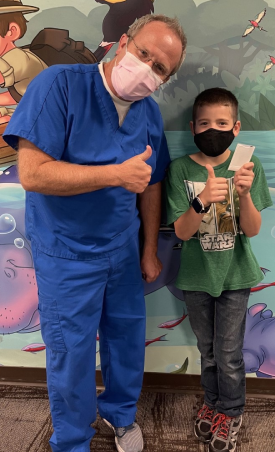In the ever-evolving landscape of dentistry, technology plays a pivotal role in improving diagnostic accuracy, treatment outcomes, and patient care. One such technological advancement that has revolutionized the field is digital dental X-ray, also known as dental radiography. This innovative imaging technique offers numerous benefits over traditional film-based X-rays, including reduced radiation exposure, enhanced image quality, and improved efficiency. In this comprehensive guide, we’ll delve into the world of digital dental X-ray, exploring how it works, its applications in dentistry, and its advantages for both patients and dental professionals.
Understanding Dental X-rays and Dental Radiography
A dental X-ray, or radiography, is a diagnostic tool used by dentists to visualize the internal structures of the mouth, including teeth, gums, jawbone, and surrounding tissues. X-rays produce images by passing electromagnetic radiation through the body, with dense structures such as teeth and bone appearing white on the resulting image, while softer tissues appear darker. These images provide valuable insights that aid in detecting and diagnosing various dental conditions, ranging from cavities and gum disease to impacted teeth and jaw abnormalities.Evolution of Digital Imaging in Dentistry
Traditionally, dental X-rays were captured using film-based imaging systems, which required chemical processing to develop the images. While film X-rays served as a fundamental diagnostic tool in dentistry for decades, they had several limitations, including longer processing times, lower image quality, and environmental concerns associated with chemical waste disposal. The advent of digital imaging technology revolutionized the way dental X-rays are captured, processed, and stored. Digital dental X-ray systems utilize electronic sensors to capture images, which are then transmitted to a computer for immediate viewing and analysis. This digital approach offers numerous advantages over traditional film X-rays, including:- Reduced Radiation Exposure: Digital X-ray systems require significantly less radiation exposure than film-based X-rays, making them safer for patients and dental professionals.
- Enhanced Image Quality: Digital X-rays produce high-resolution images with greater clarity and detail, allowing dentists to detect subtle abnormalities and pathology.
- Instant Image Acquisition: With digital X-ray technology, images are captured instantaneously and can be viewed on a computer screen within seconds, eliminating the need for chemical processing and reducing appointment times.
- Improved Workflow Efficiency: Digital X-ray systems streamline the imaging process, enabling dentists to capture, store, and retrieve images electronically. This leads to improved workflow efficiency and patient care.
- Environmentally Friendly: Unlike film X-rays, which require chemical processing and produce hazardous waste, digital X-rays are environmentally friendly and reduce dental practices’ carbon footprint.
How Digital Dental X-ray Works
Digital dental X-ray systems have several components, including X-ray sensors, imaging software, and computer monitors. The process of capturing digital dental X-ray images involves the following steps:- X-ray Generation: Like traditional X-ray machines, digital dental X-ray systems generate X-rays using a small, handheld device called an X-ray tube. These X-rays pass through the patient’s mouth and are absorbed by the dental structures, creating a shadow image of the teeth and surrounding tissues.
- X-ray Sensor Placement: Instead of traditional film, digital X-ray systems utilize electronic sensors placed inside the patient’s mouth to capture the X-ray images. These sensors are small, flexible, and comfortable for patients, making the imaging process more tolerable.
- Image Capture: Once the X-ray exposure is complete, the electronic sensors transmit the captured images to a computer workstation for processing. Digital X-ray systems allow for immediate image acquisition, eliminating the need for film development and processing time.
- Image Processing: The captured X-ray images are processed using specialized imaging software, which enhances the image quality and allows dentists to adjust various parameters such as brightness, contrast, and magnification. This digital processing capability enables dentists to visualize dental structures more clearly and accurately.
- Image Analysis and Diagnosis: Once the images are processed, dentists analyze them to assess the health of the teeth, gums, and surrounding tissues. Digital X-ray images can be viewed on computer monitors, allowing for easy manipulation, zooming, and comparison with previous images for comprehensive diagnosis and treatment planning.
Applications of Digital Imaging in Dentistry
Digital imaging technology has transformed various aspects of dental practice, with applications extending beyond diagnostic radiography. Some common uses of digital imaging in dentistry include:- Diagnostic Radiography: Digital X-rays diagnose dental conditions such as cavities, gum disease, root canal infections, and oral pathology. They provide valuable information that guides treatment decisions and improves patient outcomes.
- Orthodontic Treatment Planning: Digital imaging is used in orthodontics to assess dental and skeletal relationships, plan orthodontic treatment, and monitor treatment progress over time. Cone-beam computed tomography (CBCT) is a specialized form of digital imaging used for orthodontic diagnosis and treatment planning.
- Implant Dentistry: Digital imaging plays a crucial role in implant dentistry by enabling dentists to assess bone quality and quantity, plan implant placement, and achieve optimal aesthetic and functional outcomes. CBCT imaging is often used to evaluate the jawbone for implant placement.
- Temporomandibular Joint (TMJ) Evaluation: Digital imaging assesses the temporomandibular joint (TMJ) for signs of dysfunction, arthritis, or other pathology. CBCT imaging provides detailed three-dimensional views of the TMJ, facilitating accurate diagnosis and treatment planning.
- Endodontic Therapy: Digital imaging is essential in endodontics for diagnosing root canal infections, locating canal anatomy, and assessing the outcome of root canal treatment. Digital X-rays and CBCT imaging visualize the root canal system and ensure thorough cleaning and disinfection during treatment.
Advantages of Digital Dental X-ray
Digital dental X-ray technology offers numerous advantages over traditional film-based X-rays, including:- Reduced Radiation Exposure: Digital X-ray systems require lower radiation doses than film-based X-rays, making them safer for patients and dental professionals.
- Enhanced Image Quality: Digital X-rays produce high-resolution images with greater clarity and detail, enabling dentists to detect dental conditions more accurately.
- Instant Image Acquisition: Digital X-ray images are captured instantaneously and can be viewed on a computer screen within seconds, eliminating the need for film processing and reducing appointment times.
- Improved Workflow Efficiency: Digital X-ray systems streamline the imaging process, improving workflow efficiency, faster diagnosis, and enhanced patient care.
- Easy Storage and Retrieval: Digital X-ray images can be stored electronically and retrieved easily when needed, eliminating physical film storage and reducing administrative overhead.
- Environmentally Friendly: Digital X-rays are environmentally friendly, as they eliminate the need for chemical processing and reduce dental practices’ carbon footprint.



